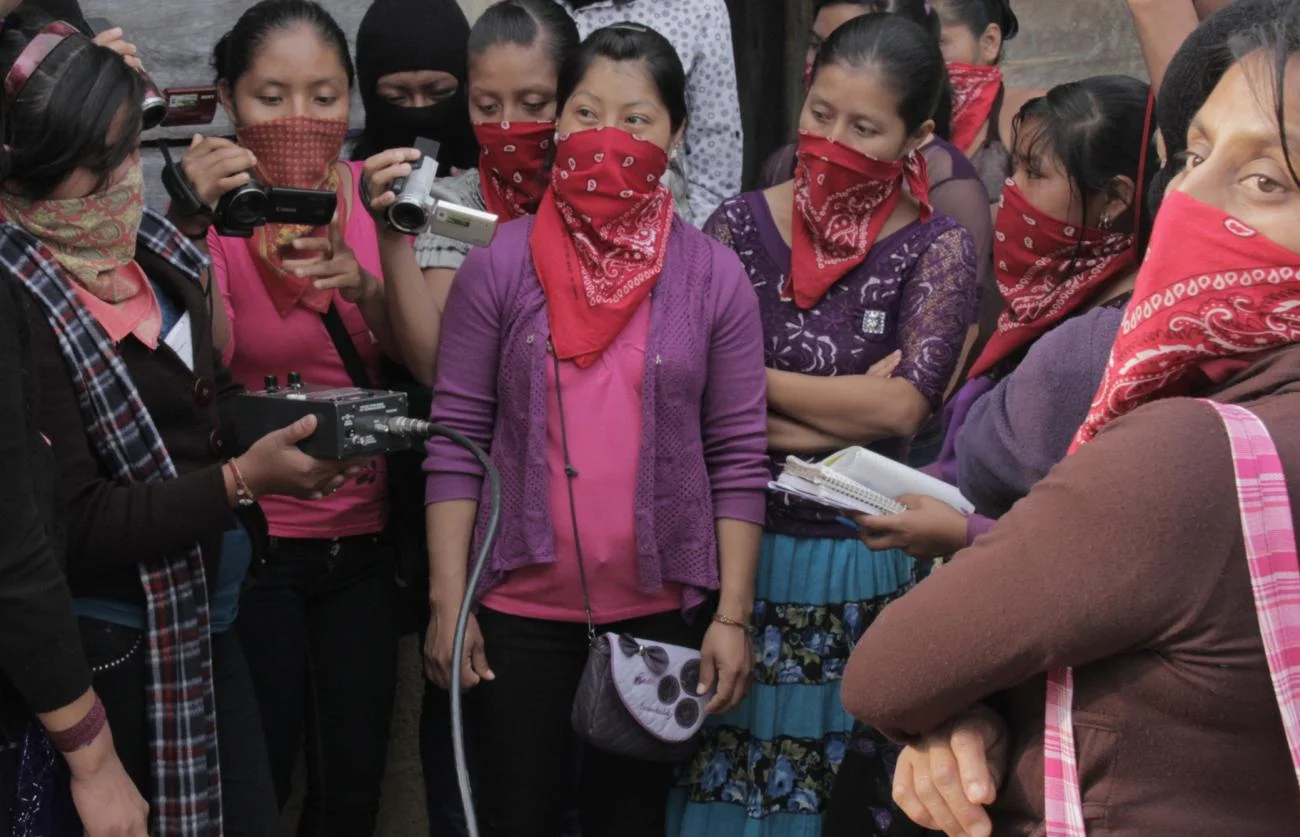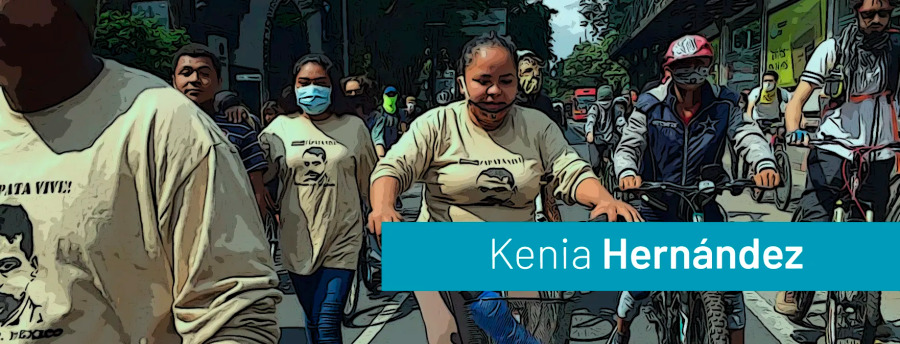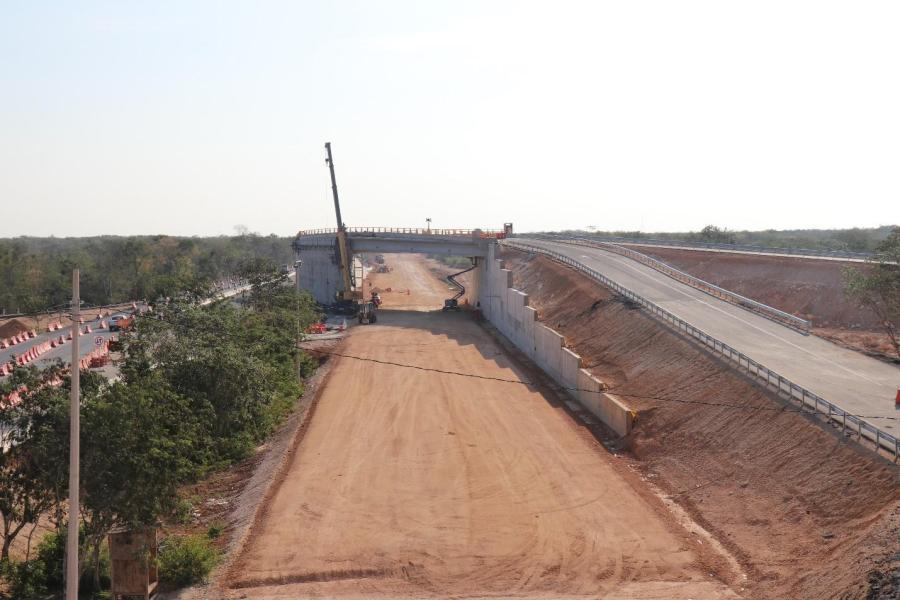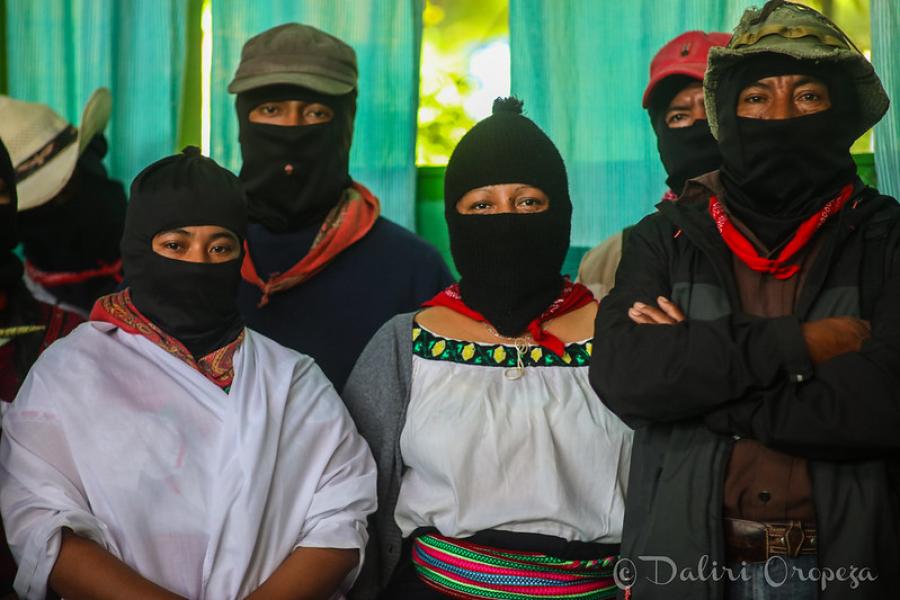
En español.
As part of their self-determination process, Zapatista communities have developed a communication project that informs people in their entire territory in the mountainous and autonomous zones in Chiapas, Mexico. More than a dozen radio stations located in different parts of Chiapas are broadcasting about their struggles and the rights of the local Maya Peoples.
The Zapatista radio stations were established in 2009 as part of a larger autonomy process that began more than 20 years ago to denounce social injustices in their communities due to problems caused by the Mexican government. This group of stations supports the revitalization and promotion of Mayan cultural practices threatened by globalization, and are defending lands, territory, and the autonomy of authorities in the villages. With coverage to more than 1,000 communities and rancherías, the radio stations continue to broadcast after a decade of work.

The radio stations have their own systems of government that are made up of a committee and representatives that make decisions collectively, always in coordination with the boards of good governance which are the bodies of maximum representation throughout the autonomous territories. As means of communication dedicated to serving the population, these stations from the beginning had the objective of communicating to the people in their native languages: Tzeltal, Tsotsil, Tojolabal and Cho, in addition to Spanish, not only to revitalize those languages but to promote a sense of identity and pride in their people. For the stations, it has always been important to go beyond transmitting and being listened to and to create a sustainable media that strengthens their self-determination. The stations began to train people from the communities not only in locution, but also in the technical management of the radios, including the use of computers and digital systems, the manufacture of antennas and transmitters, as well as in radio production.
Since beginning operations, the stations have invited men and women of all ages to participate equally. Both adults and youth pass through the broadcast cabins. However, the technical aspect of operations has been difficult for many women, who tend to leave the radios due to their work loads as women. Women’s needs were different, and the stations sought to provide them with more training not to leave them out and to permit them to still be independent and able to attend and solve their own technical problems.

Access to and renovation of adequate equipment (transmitters, computers, etc.) essential for the proper functioning of the radio stations have been recurring challenges for the organizations. Although communities support the expenses of those who work at the stations through food and transportation, new needs constantly arise that must also be covered, such as the relocation of transmission towers to improve radio coverage, updates to equipment such as mixers and computers, repair or replacement of damaged transmission equipment.
With the support of Cultural Survival’s Community Media Grants Program, several radios have solved part of these needs thanks to a grant. In addition to renovating equipment, stations have organized training in technical aspects of radio, such as the construction and maintenance of transmitters, cabin equipment management, installation of antennas and electrical protection systems. All this with the goal that stations will receive technical support in an increasingly sustainable way, without relying on the acquisition of expensive commercial equipment and the assistance of external specialist technicians who tend to significantly raise operational and material costs.

As part of the activities carried out with this grant, new radio members were trained in voice-overs, editing and production workshops, taught by senior members of each radio with more experience. These courses, organized according to the particular needs and number of new members each radio has, will continue until the end of this year. Although the project was originally intended to cover only three radios of one of the Zapatista zones, the communities decided to include all their radio stations throughout their territory of influence.

Through messages, songs, radio theater, poems, the stations inform and raise awareness about the care and defense of Mother Earth, respect for women, health, children's rights, the value of culture and about the true history of Indigenous Peoples. They also promote the prevention of alcoholism, support the organization of Indigenous Peoples and strengthen the system of self-government of their Peoples. At present, the Zapatista radios are pioneers in the fight and defense of Indigenous rights, due to their origin and determination, they have gained listeners who previously were not fond of their content, but who today support and prefer them over other media.
In the 1996 San Andres Peace Accords, regarding the recognition of the cultural rights of Indigenous Peoples of Mexico and signed between the Zapatistas and the government, the 245 point states that Indigenous Peoples have the right to have their own means of media. The main bases of these agreements were subsequently unknown by the government, so the Zapatistas decided to exercise their rights outside government policies. As part of a political positioning and in the exercise of their autonomy, the Zapatista radio stations have chosen not to access a community or Indigenous radio concessions for frequencies since 2013 when it was made possible to acquire one in Mexico.

Maintaining the radios has been difficult, especially since they address and denounce issues that concern Indigenous Peoples which affect business and government interests. There is currently a great concern about the implementation of large infrastructure and extractive projects throughout the country, promoted by the government of Andrés Manuel López Obrador. These projects will involve the encrouachment and dispossession of territories where many Indigenous Peoples live, threatening their cultures, lives, and natural resources. Among many other projects, three stand out in magnitude and will cause damage to the people and the environment: the so-called Mayan Train, whose construction and operation will produce serious effects on the rain and tropical forests of the entire Mexican southeast where there are species of flora and fauna unique in the world; the Morelos Integral Project that already affects Indigenous Peoples in several states in the center of the country; and the Commercial and Railway Corridor of the Isthmus of Tehuantepec, which is intended to connect the Pacific with the Atlantic, that will affect communities of Oaxaca and Veracruz.

Another concern is the breach by the Mexican government of the right to Free, Prior and Informed Consent and culturally appropriate consultation of Indigenous Peoples regarding these initiatives. The rejection of these projects by many Indigenous communities and organizations has been met with repression, threats, and murders. Among many others, the case of Samir Flores Soberanes, a Nahuatl environmental defender and community communicator who opposed the Morelos Integral Project and was shot dead at the doors of his house in February 2019, stands out.
In Chiapas, given the heavy concentration of police-military forces near roads and communities to prevent the passage of Central American migrants, as well as the imminent imposition of the Mayan Train and other extractive projects in the region, Zapatista communities have carried out an arduous reorganization process, both operational and structural, that involves a large number of internal assemblies of reflection and search. As a result, the communities recently announced the creation of 11 new political, organizational and autonomous centers in the Chiapas territory, which include new autonomous municipalities, new caracoles (headquarters of the Good Government Boards), and new Centers of Autonomous Resistance and Zapatista Rebellion. The Zapatista communities now have a total of 43 autonomous centers and more than a dozen radio stations that serve them.



